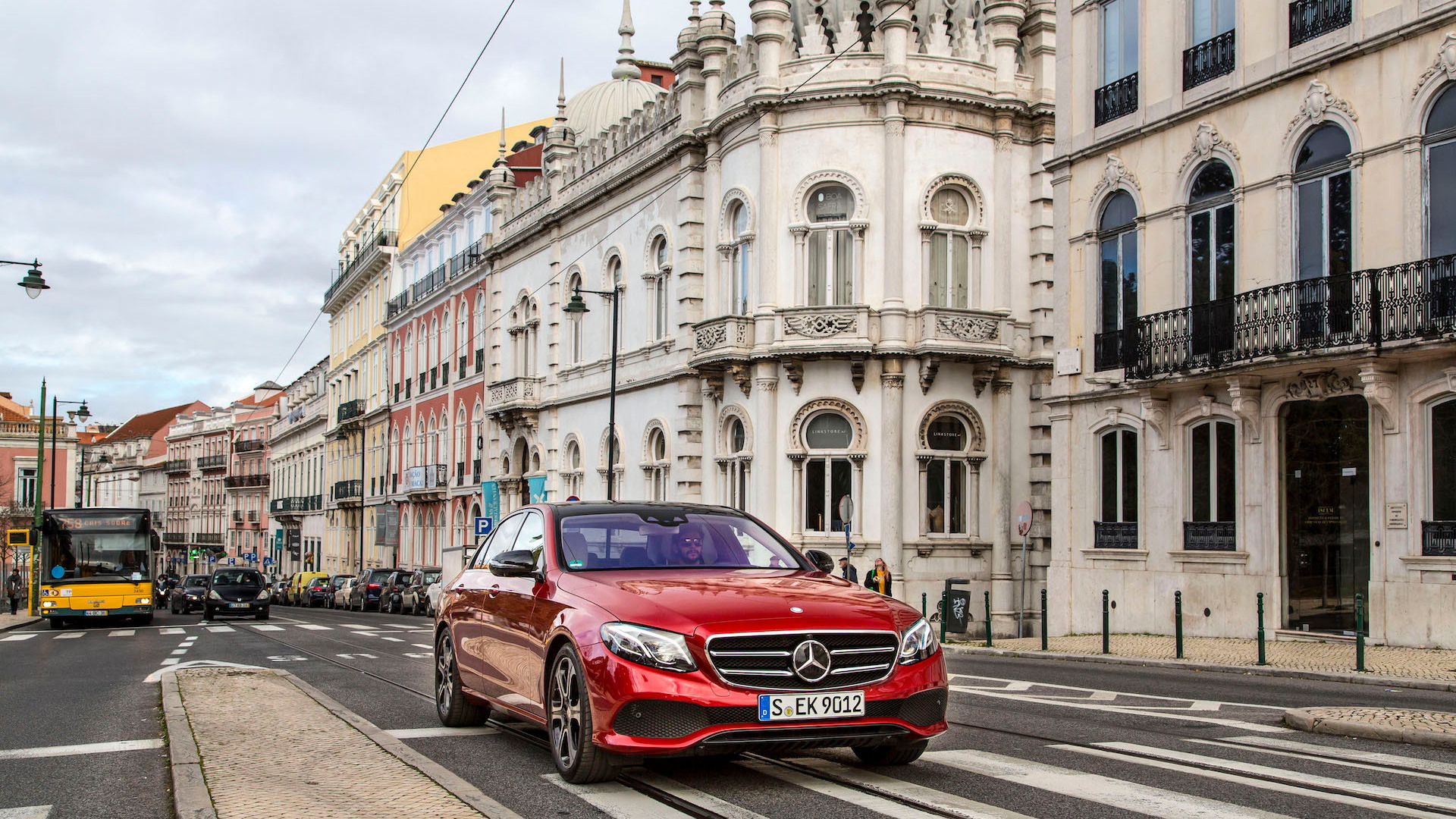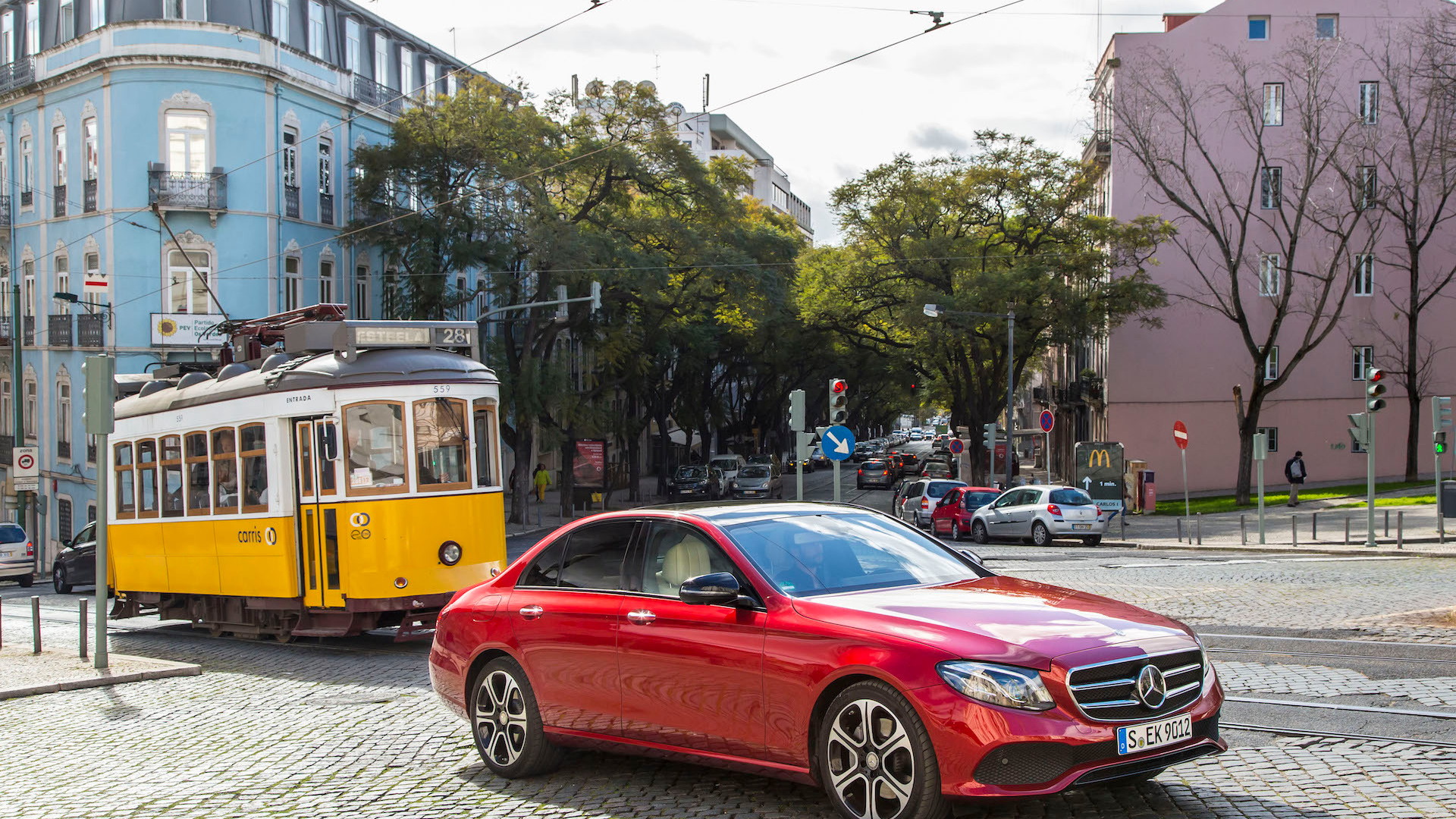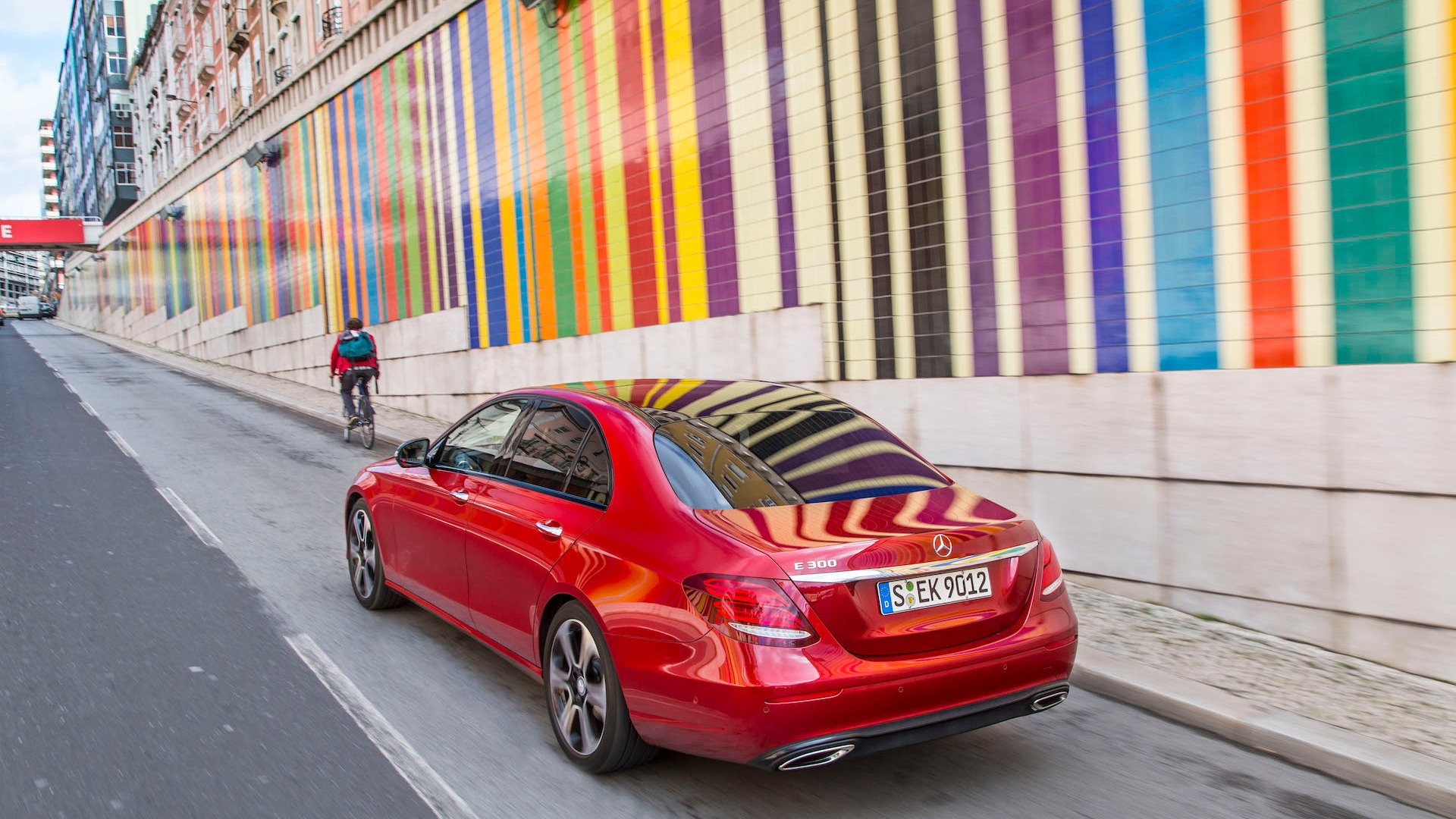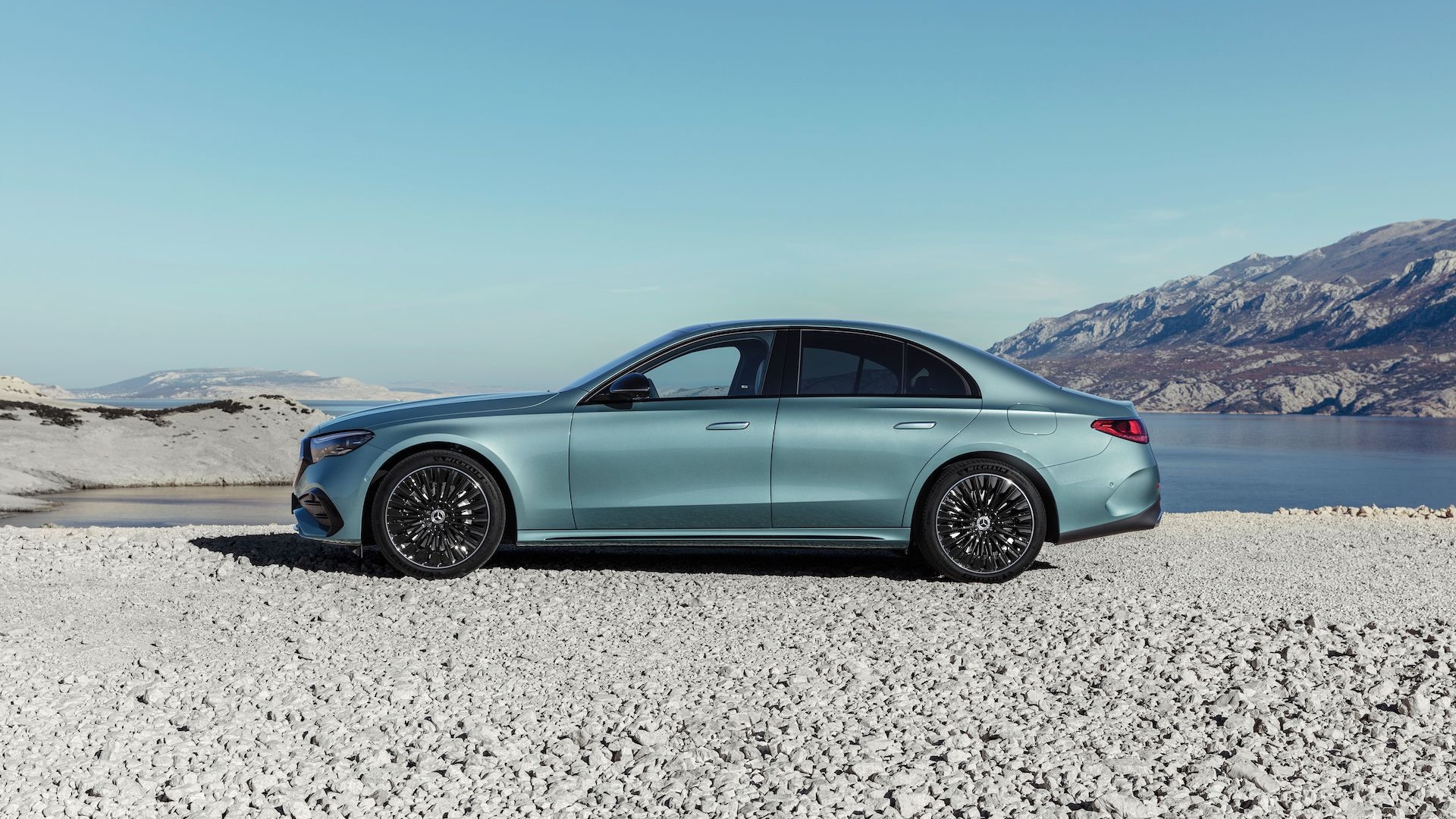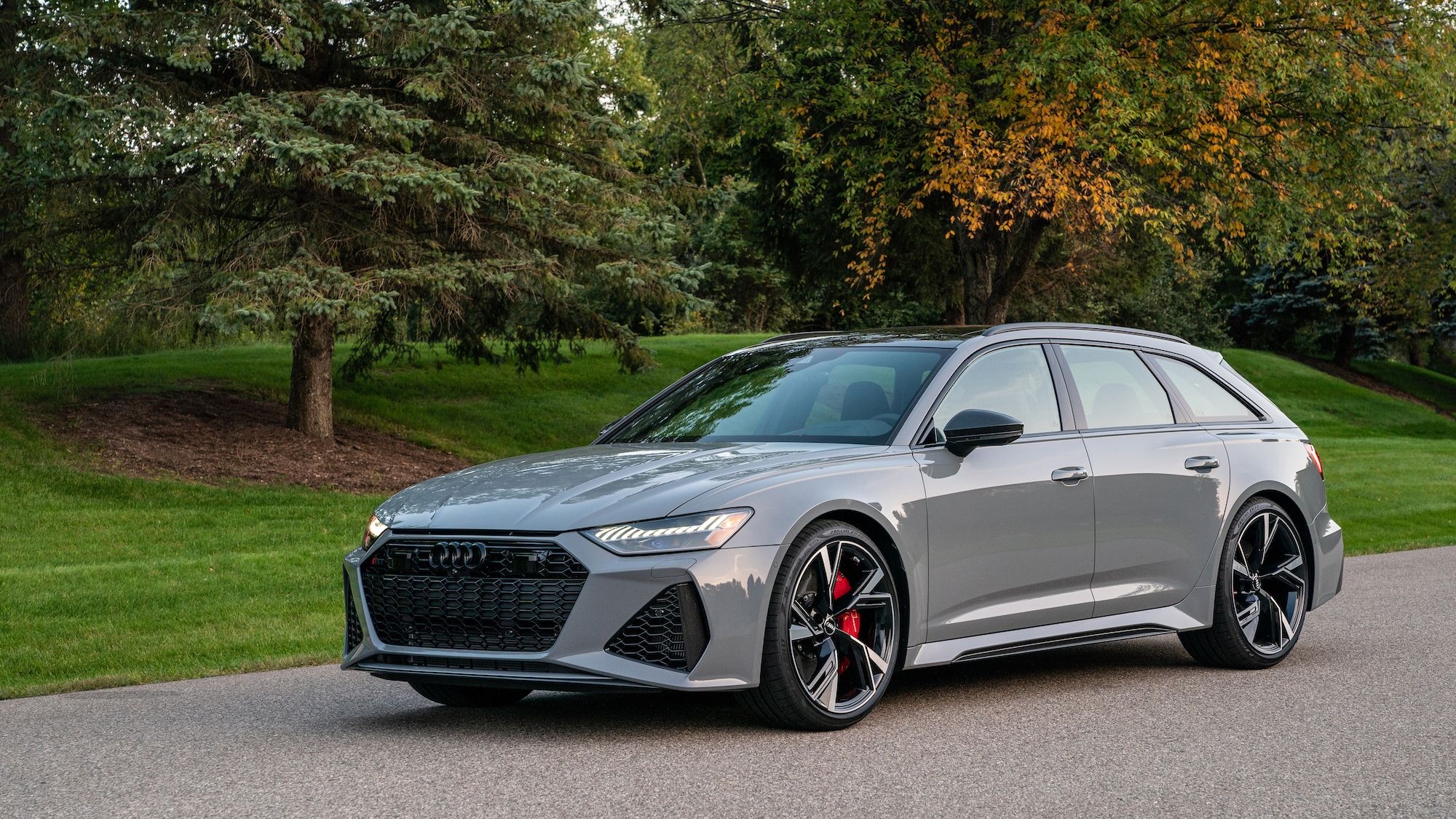The car world is hurtling off on new and exciting and in some cases, highly speculative vectors. From Tesla to Google to Apple, a batch of new auto arrivals are owning the tech mantle without having built generations of backstory. Or even a business case.
They haven't left the old guard behind just yet, though. Mercedes-Benz is as establishment as it gets, but it's also put some astonishing markers down on technology in its bid to stay on the automotive desire path.
Case in point: With the 2017 E300, Mercedes all but glosses over how the car drives with a human at the controls. The push now, the hoped-for claim to fame, is how it drives when that human has mentally checked out.
Let's spare the notion that anything else radical has happened with the E-Class. It remains a benchmark among luxury cars, among mid-size cars, and among four-door sedans. It's more beautiful than it's been in a generation. It's more substantial. More efficient.
What has happened is radical enough. In this generation, Mercedes says it's outdone itself, by baking in more autonomous-driving and safety and infotainment hardware in the new E-Class than it offers even in its sensuous, stalwart S-Class.
The E-Class now can drive almost entirely by itself at autobahn speeds, and can sense the road ahead at U.S. highway speeds when the road itself is in poor repair. We're a long, long way from mere cruise control here.
On that front, it's a magnitude ahead of rivals like the Audi A6, BMW 5-Series, Lexus GS, Jaguar XF, and Cadillac CTS. It's now locked in a headline war with the American-made Tesla Model S for the smartest car on the road.

2017 Mercedes-Benz E-Class (E300)

2017 Mercedes-Benz E-Class (E300)

2017 Mercedes-Benz E-Class (E300)
Copy, paste, success
With that kind of brainpower at work, the E-Class could easily have backed off on dramatic styling change. It hasn't. It's embraced the long-nose, short-deck sweep that's recast the C-Class and S-Class as the most stylish cars in their respective classes.
Not all E-Class cars have this elegant new look. While the sedan is completely new, the coupes and convertibles soldier on in last-generation form for a bit longer.
There's some variation within the E-Class fold. Drivers can choose between a Luxury model with a more traditional grille and a hood-mounted Mercedes star, and a Sport model with a slimmer, sparer grille and a flat star badge on the hood.
From there, the silhouette remains the same. There's a tapered shoulder line that pulls down toward the rear wheels, a carefully draped roofline that flows into the abbreviated rear end. At the back, LED taillights have a diffused pattern dubbed by Benz as a "stardust" effect. It's not as complex as Rolls-Royce's starlight roof, with its thousands of pinpoints of LED light, but it's a charming detail, one of dozens that set this generation of Mercedes cars well apart from those in the past.
The effusive design cues carry into the cabin. The E-Class interior is no longer bound by big bands of wood and studded by banks of buttons. It's swept up into a rhythm of textures, from open-pore woods to metallic weaves, that rise and ebb from the door panels toward a bombe-chest of a center console. It's all capped in stitched leather and warmed by 64 shades of ambient lighting from prom-night purple to old-money white.
Like the S-Class, the E doesn't shy from the digital era. What would be the point, when it has twin 12.3-inch screens at hand? Most E300s will come with one screen and a handsome set of dials, but Mercedes will take special orders for what's likely to become the stock setup in AMG-powered E-Class sedans. The dual-pane setup sets the right tech mood, but the freedom of space puts some information behind the steering wheel, no matter how you tilt or telescope it. Information fills every corner of the driver-side display--almost as if the steering wheel could go away entirely.
The cockpit's receptive to fingertip control. Below the right-side screen, thin rows of climate-control switches sit ahead of the touchpuck that controls the infotainment system. The E's steering wheel also has touch surfaces for swipe-and-tap operation.
Mostly, though, it wants to be admired by the other senses. The leathers are more vividly colored, the sound system speakers perforated for aural and textural thrills. The S-Class set a high-water mark for all of Mercedes when it comes to interior style, and this car has copy-pasted the look to great effect. If you still fall back on the "E-Class is a German taxi" critique, you probably haven't been in one in this century.

2017 Mercedes-Benz E-Class (E300)

2017 Mercedes-Benz E-Class (E300)

2017 Mercedes-Benz E-Class (E300)
E300 only, for now
American drivers will get the new E-Class at first in only a few mechanical specifications. A turbocharged 4-cylinder is now the core powerplant, under the E300 badge.
Until they arrive, the E300 will fit all bills, and fit them well. On the spec sheet, the 2.0-liter turbo is rated at 241 horsepower and 273 pound-feet of torque. It's coupled exclusively to a 9-speed automatic that's made its way into the new SLC-Class as well as the CLS-Class.
Since the days of the Lotus Esprit, car writers have been hand-wringing over the prospect of luxury cars with turbo fours. We're in a new era, and though the 4-cylinder doesn't try to hide its origins with active noise cancellation, it's a responsive piece that should answer any questions about its value.
Zero to 60 mph estimates sit at 6.3 seconds or less, on par with the vast sweep of uprated mid-size cars. With a flick of its paddle controls, the E300 calls up strong acceleration across most of its powerband, and the shifts don't betray any of the lumpy quality found in other 9-speed cars.
Of course there's more to come. Given the expanding AMG lineup in the smaller C-Class range, it's a sure bet that future, higher-powered E-Class sedans are coming soon, just as sure as their powertrains will involve more cylinders and more turbos. All-wheel drive is coming soon, likely with the AMGs.
As for plans for a turbodiesel and a plug-in hybrid model, they're both likely punted a few years. Turbodiesels, for obvious reasons. The hybrids likely are waiting for better batteries, which could give next-generation plug-in hybrids an electric-only driving range of up to 50 miles.
Two different suspension types are planned for U.S. E-Class sedans. The basic multi-link independent suspension gets augmented with adaptive dampers, and Mercedes will tune that hardware to Comfort and Sport specification. Those models weren't offered at the first drive event.
What was available were E300s with Air Body Control. Essentially a replacement for previous air suspension and active body-control systems, the new setup has air springs with two chambers per strut in front, three per strut in back, with the ability to selectively inflate and deflate bags based on ride and handling needs of the moment.
The system includes the adaptive dampers, and also incorporates automatic load leveling, and lowers the E-Class at highway speeds for improved fuel economy, while it can also raise the ride height for better ground clearance.
As before, the suspension--and steering, transmission, and throttle settings--can be cycled through comfort, economy, sport, and Sport+ modes.
Those driving-mode names don't quite give away the broader envelope of ride and handling coded into the E300. We drove through grinding traffic outside Lisbon, looped through tight esses that crashed into Portugal's Atlantic coast, and consumed big stretches of highways, sampling all the drive modes.
Switching into Sport and leaving it there is an acceptable protocol. It's the closest in feel to the latest tune of Mercedes sporty four-doors, with good ride quality and quick transient responses. Comfort mode has taken some sort of industrial-strength chill pill; it relaxes all the airbags you'd want relaxed, while the dampers keep the queasy small body motions at bay.
Beyond that? There's plenty of territory above Sport+ yet to be mined. In truth, it feels like a grippy set of tires and a slightly tweaked algorithm are all the E300 will need to gain AMG status. That, and another blower and another liter of displacement.
Room to spread out
The E-Class is the last Benz sedan to benefit from right-sizing, in the wake of the arrival of the CLA. In this case, it means growing a bit to put some distance between it and the compact C sedan.
By the numbers, this E's gained 2.6 inches of wheelbase and 1.7 inches of overall length to sit at 193.8 inches long, on a 115.7-inch wheelbase. Curb weight is barely lower, to just below 4,000 pounds in fighting trim.
In practical terms, there's a bit more front-seat space--and a pair of multi-adjustable chairs with lots of lumbar and optional massaging. The rear seat didn't lack for space, but there's more of it, despite a roofline that could have given up an inch were it not for a repackaged, reshaped bench.
That back bench is actually a three-piece cushion, split to provide access to the trunk, which at 13.1 cubic feet isn't vast.
The more welcome touches in the cabin include a new package of fittings for driver and passenger that warms the armrests and center console, as well as the steering wheel. The rear seats have a middle-section split that offers a storage armrest with its own cupholders and tablet holder--important in places where the E-Class is a chauffeur car, first and foremost.

2017 Mercedes-Benz E-Class (E300)
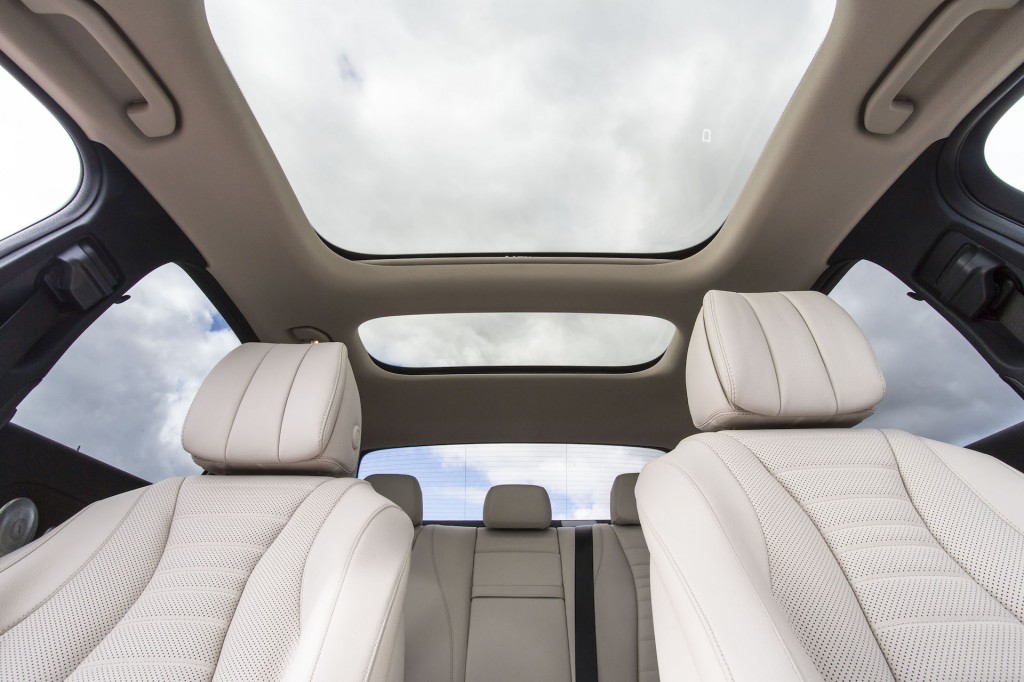
2017 Mercedes-Benz E-Class (E300)

2017 Mercedes-Benz E-Class (E300)
Frontier land
We're almost at the point where cars must drive well, and must also drive themselves well. The E-Class has helped pull that event horizon closer with rafts of sensors, cameras, and algorithms that have formed a Voltron from more humble passive-safety features.
Take anti-lock brakes, which begat traction and stability control. The same sensors that govern anti-lock control now feed data to the E-Class' brain and draw data from it, melding with information from in-car cameras and radar, forming a data profile that tells the car how to steer, decelerate, brake, and brace itself for impact. All together, it makes it less likely that the E-Class will collide with the car ahead even if that car comes to a panic stop, even if that car is running at 100 mph.
The universe of car safety features in the E-Class now encompasses all of that, as well as a system that plays a sound that can trigger a heightened human response to an imminent accident. Mercedes calls it the Pre-Safe Sound; in layman's terms, think brown note.
A separate system couples that with inflatable bladders in the seats that push passengers away from the doors in case of side impact. A set of cameras stitches together a birds-eye view of the car's surroundings, making parking a snap--when a driver actually has to park the vehicle, rather than use a smartphone app that signals the car to park itself in the tightest of spots.
Above all, the E-Class' piloted driving abilities will set it aside as a milestone. It's possible to let the car drive itself for miles and miles, with just an occasional tap on the steering-wheel swipe controls, letting it know there's still a human at the controls. The E's adaptive cruise control can follow a car ahead at speeds of up to 130 mph; it can also follow the road ahead even when lanes aren't clearly marked, at speeds of up to 81 mph.
It's able to handle some more advanced maneuvers. The E-Class will also change lanes for the driver once the turn signal has been activated for two seconds. It can apply the brakes if it sees approaching of cross-traffic. It can amplify steering inputs when it detects a driver making evasive maneuvers.
Most important, it's active all the time. It's essentially an application running in the E-Class' background, ready to act when the driver won't.
It's beyond the usual luxury touches. Compared to piloted driving, the E-Class' new infotainment interface pales in comparison, as does the ambient lighting. It lacks for nothing, but even Apple CarPlay, panoramic roofs, Burmester sound systems, and smartphone wireless charging seem like...just...stuff. (If there's anything Mercedes learned from its starter marriage to Chrysler, though, is that people like lots of stuff.)
Minus its time-warp into the future of driving, the E300 has done nothing to disrupt its luxury force field. It's pretty, but resists being a statement piece like the CLS-Class. It's powerful and frugal, but leaves plenty of room for development. It's likely to remain a strong seller in the U.S., though it's no longer Mercedes' best-selling vehicle--that's now the C-Class.
What is it, mostly? The E300 feels more like a closing statement in the case that Mercedes is making--that it deserves the tech mantle, more than the arrivistes.
The 2017 Mercedes-Benz E-Class sedan goes on sale in the summer of 2016.
_______________________________________
